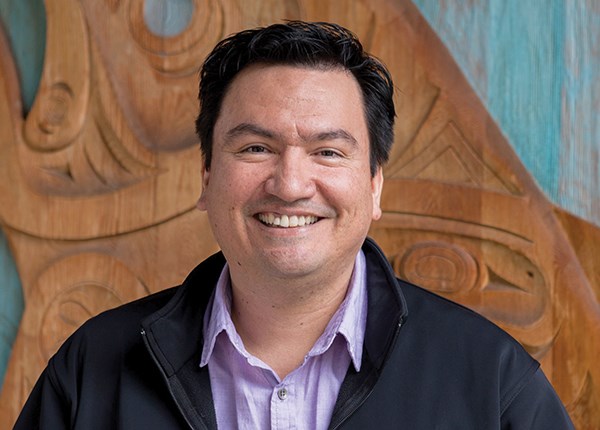With the Squamish Nation’s involvement in several massive projects in the District of Squamish and beyond, it has been a busy year for Squamish Nation hereditary Chief Ian Campbell. The Squamish Chief caught up with Campbell for a chat about a variety of topics from how the Nation is juggling its increased portfolio to his take on the federal government’s handling of the missing and murdered aboriginal women issue. What follows is an edited version of that conversation.
Q: With Garibaldi at Squamish, the Oceanfront, the Cheekye Fan, FortisBC assessment, etcetera, how is the Nation managing to juggle it all?
A: There is a sense of urgency for many of these projects that has heightened the anxiety level within our communities and it is important for us to then create the vision of how does this fit into the vision of growth and sustainability and connection.
The Nation’s capacity is certainly being stretched – we’ve come from 1923 when we amalgamated… coming through mass depopulation through mass epidemics through to the [mid-20th century] when we were finally recognized as citizens on our own lands, our culture was no longer illegal under Canadian legislation. From the 1960s to the present… [there’s been] rapid growth and restructuring of our government and programs. Now we are looking at the next iteration, which is how do we manage wealth creation and wealth management and that is really important to inspire our young people: a culture of business, a culture of excellence.
Q: Let’s talk about some of the current projects impacting Squamish. Can you speak about the Cheekye Fan and a potential development there? It is such a messy issue with the need for debris flow mitigation and who will pay for it.
A: You have identified the key issue, which is the debris flow torrent hazard, which is an ongoing concern not only for the Nation, but for all residents in the [Squamish] Valley. We live in such topography that there’s very little developable land that is outside of a 200-year flood plain, or a torrent debris flow hazard area so the need for us to coordinate these types of potential developments while mitigating risk is essential in order to see these projects come to fruition.
We [Squamish Nation and the District of Squamish] are of course talking to the province with, “Where is your responsibility?” Knowing that our reserves are pretty much in the line of fire, as is.
Q: You mentioned working with the District of Squamish, has there been more of an effort to forge a relationship?
A: Oh, yeah. It has been an ongoing relationship building for a succession of mayors and councils and chiefs and councils. Previously, we entered into an agreement with the district, [The Accord signed in March 2011 at Totem Hall] to basically show good will in creating more strategies on future growth and development. So we felt that was a positive step forward. Now we are entering into greater opportunities such as the community forest license that we’re working on finalizing, establishing a joint community forest license between the Nation and the district. So we are seeing tangible results now. I think that is a positive signal for our members in both communities to say we are part of the same community here and we need to create a common vision.
Q: With the proposed Woodfibre LNG plant, can you update us on how things are going with FortisBC and negotiations on your 25 conditions?
A: It is important for Fortis to look at the environmental conditions that the Squamish Nation put forward and that they do their assessment of these particular conditions that applied to them. They have gone out and done a lot of those studies and are reporting back to us on some of their findings and what some of the options are. That process is still mid-stream. We have our technical people who are working on this quite diligently to ensure the conditions the Nation put forward are being met in order for the Nation to proceed to a recommendation to our chiefs and council whether or not to support that aspect.
We hope to report back to our chiefs and council in a few weeks and then back to our membership. It is important that we continue to update the community.
Q: Changing gears a bit to a broader issue, with the new federal Liberal government, how do you feel the issue of missing and murdered aboriginal women is being handled?
A: It is an issue that is on the hearts and minds of every one of our First Nations people across this country. I believe we all know somebody in our families or in our circles who has been murdered or who is missing. We are a small community as First Nations. We are only about one million people in this country. So it resonates deep for all of us. We see the missing and murdered indigenous women as a symptom of a greater societal complex issue that can’t be readily resolved, but we need to start addressing. How is this issue stemming from colonialism? A lot of people don’t want to talk about the overarching environment that has led to these conditions of marginalization…. Prime Minister Justin Trudeau made a commitment to the chiefs at the Assembly of First Nations gathering in December. Now we need to determine what is the scope of the inquiry, how long is the duration, how many commissioners are appointed, there are a lot of technical questions. To engage with the families themselves, I think is vitally important. That the families have participation from step one right through to the conclusion is going to be paramount in seeing the success of this inquiry.



